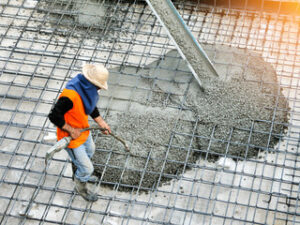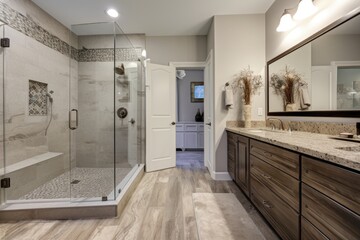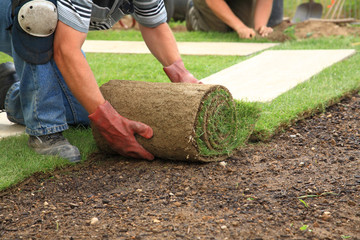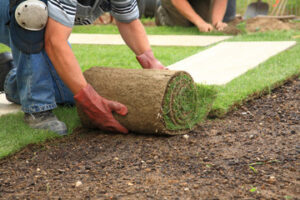Concrete Contractors provide specialized expertise and experience to construction projects, ensuring that concrete work is done accurately, efficiently, and to the highest standards of quality. They are also capable of performing repair and maintenance services to extend the lifespan and appearance of concrete structures.
Finding a reputable contractor requires careful consideration of several factors. Contact Concrete Contractors Greensboro NC for professional help.
A passion for the craft of concrete construction is what really sets professional concrete contractors apart. It’s not just a job, it’s a way of life. These talented individuals take pride in their work, and the gratification they get from seeing their finished projects is immeasurable.
Whether it’s pouring foundations, constructing walls or laying slabs, each project begins with meticulous planning. During the planning phase, experienced concrete contractors will develop a detailed plan that takes into account safety, budgets and time constraints to ensure an efficient and successful project. This detailed plan enables them to save clients both time and money in the long run.
As a construction business grows, it’s important to stay up-to-date on the latest technologies. This is especially true for the concrete industry, which has been rapidly evolving over recent years. For example, software like Takeoff Boost streamlines tedious workflows and improves accuracy, helping estimators focus on crafting precise estimates.
In the case of concrete, these innovative tools can also help reduce environmental impacts. For instance, by reducing the amount of material that is hauled from the site to the cement plant, it cuts down on the amount of truck traffic and fuel needed to transport the product.
Concrete has come a long way since ancient civilizations first mixed limestone and volcanic ash to create durable structures. Today, it’s one of the most widely used building materials on earth and serves as an integral part of our infrastructure.
Extensive Training
Concrete Contractors are highly trained professionals who transform raw construction materials into durable, long-lasting concrete structures. This requires extensive knowledge of the properties and capabilities of different types of concrete, and precise execution to ensure that the finished project can withstand the test of time and nature.
When selecting a concrete contractor, be sure to ask about their education and training. A strong background in the industry is a good indication that they will be knowledgeable and competent on-site. Additionally, look for certifications or affiliations with trade organizations that demonstrate a dedication to quality work and upholding professional standards.
Moreover, it is vital to choose contractors who are fully licensed to perform the work they claim to do. This demonstrates that they have met all state and industry requirements for working with concrete and will provide you with peace of mind on the jobsite.
Commercial concrete contractors must also undergo specialized training to understand the risks associated with their work and how best to mitigate them. Training courses typically include hands-on practical demonstrations to simulate real-world scenarios and prepare students for on-site challenges. Courses may cover topics such as mixing techniques, pouring procedures, and curing practices. They may also cover the various tools and equipment used in concrete construction, including formwork and reinforcement materials.
It is also important that concrete contractors have the proper safety equipment to protect themselves from injury during their work. This includes gloves, eye protection, and a hard hat. Concrete is heavy, so the right personal protective gear will help prevent injuries from falls and back strains. Concrete is also very abrasive, so the correct footwear will reduce the risk of injury.
A comprehensive training program will also cover workplace hazards and how to respond in an emergency situation. This training can include instruction on fire safety, managing material hoisting, and implementing shoring and pedestrian protection measures. It will also cover the use of PPE for different types of concrete applications, such as precast and ready-mixed.
In addition, some training programs will include a specific focus on the latest developments in the concrete sector. These courses are designed to keep professionals informed about new technological advances, regulatory changes, and sustainability practices. They can also provide networking opportunities and enhance career progression.
Industry Knowledge
Concrete is a highly versatile building material, and concrete contractors have in-depth knowledge of the various types of concrete, their characteristics, and best applications. In addition, they are knowledgeable about the various construction techniques and processes that can be employed to create unique and customized solutions for different project specifications.
Concrete Contractors must have excellent attention to detail in order to prepare, pour, and finish concrete properly and ensure a high-quality result. They are also adept at problem-solving and can think outside the box to overcome challenges on construction sites. This makes them indispensable in projects that require innovative solutions to address unexpected obstacles.
The ability to communicate technical details in a clear and concise manner is another essential attribute of a concrete contractor. They must be able to answer questions and concerns from clients about concrete materials, construction methods, and pricing in a way that is easily understood. Additionally, they must be able to provide accurate quotes for project expenses, ensuring that the final cost of the project stays within budget.
In addition to technical expertise, a qualified concrete contractor should have a good reputation in the industry. Ask for access to a portfolio of past projects and request client testimonials to gain insights into their work ethic, communication skills, and level of satisfaction with the completed project.
It is also important to check a concrete contractor’s licensing and insurance coverage. Make sure they have a valid license to operate in your state and workers’ compensation, general liability, and automobile insurance to protect you in the event of an accident while on site.
Concrete Contractors are vital in the construction of commercial and residential infrastructure. Their extensive technical knowledge, attention to detail, and physical stamina are invaluable for ensuring the successful completion of construction projects. By combining their knowledge of concrete with creativity and imagination, they can produce structures that are both durable and functional. Their skill and precision help to guarantee that every construction project is completed to the highest standards. The industry is constantly evolving, and Concrete Contractors stay abreast of new innovations in concrete technology and construction practices through continued education and workshops. This enables them to adapt seamlessly to different project requirements and produce results that are above and beyond industry norms.
Experience
When selecting a concrete contractor, it’s important to evaluate their credentials and experience level. The experience of a contractor helps them to navigate any challenges that may arise during a project, providing peace of mind and ensuring a successful outcome. Credentials such as licensing appropriate for the scope of a project, proof of liability insurance coverage, and detailed project timelines and cost breakdowns provide assurance that you have selected a professional who can deliver quality results.
When interviewing potential contractors, ask for a list of references from previous projects that you can contact to get feedback about their work. You should also consider their ability to communicate effectively with clients and answer questions clearly, as well as their willingness to address any concerns that may arise during the course of a project.
Contractors with a passion for their craft and an in-depth understanding of concrete’s properties can create high-quality results that stand the test of time. Their expertise allows them to optimize materials and construction techniques, which saves time and money while achieving better-quality results. In addition, they have the physical stamina to handle heavy equipment and carry out physically challenging tasks.
It is also important to assess a contractor’s ability to manage changes in the scope of a project, as these can impact the timeline and budget. This should be outlined in the scope of work, with clear communication between both parties to ensure that the project remains aligned with client expectations.
With so many concrete construction companies to choose from, finding the right one for your project can be challenging. Identifying the most suitable candidates requires careful consideration of their skill sets and experience, as well as evaluating their credentials and qualifications. By taking the time to select a qualified and experienced concrete contractor, you can ensure that your construction project is completed on schedule and within budget.








 To profit, handypersons must charge rates that cover their material costs and allow them to break even after paying taxes. They should also consider their living and other business costs when setting their rates.
To profit, handypersons must charge rates that cover their material costs and allow them to break even after paying taxes. They should also consider their living and other business costs when setting their rates.